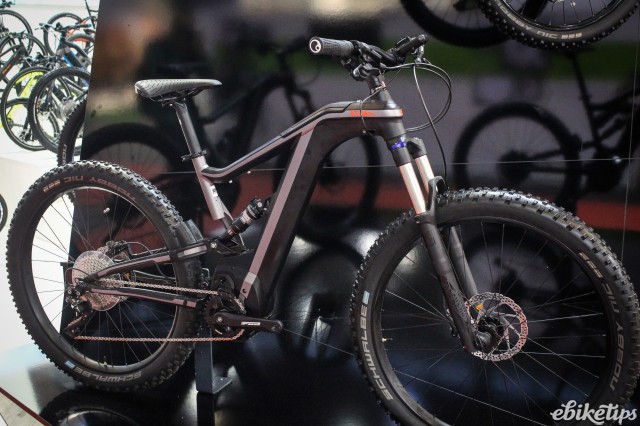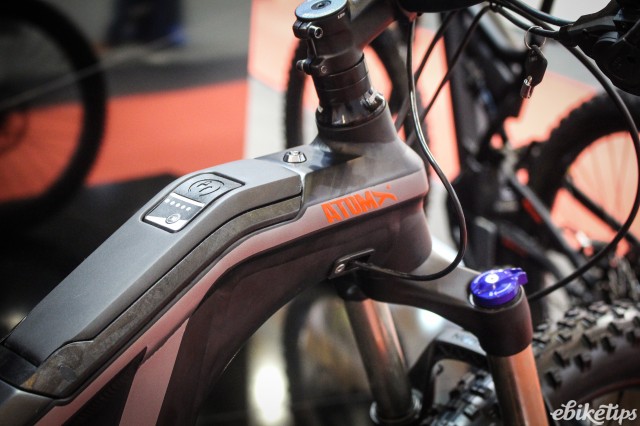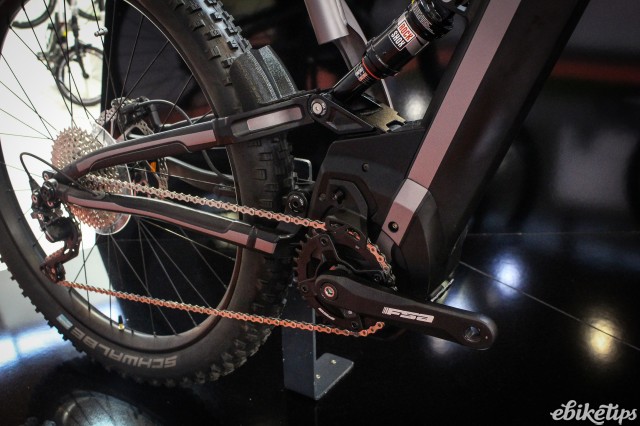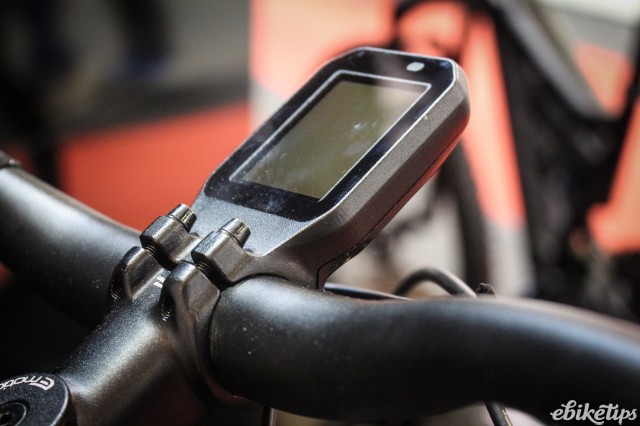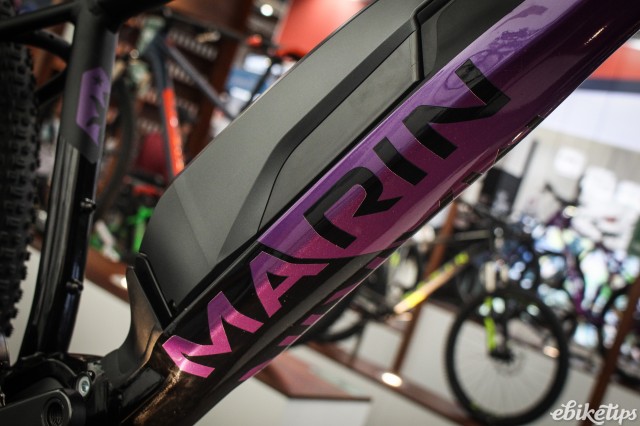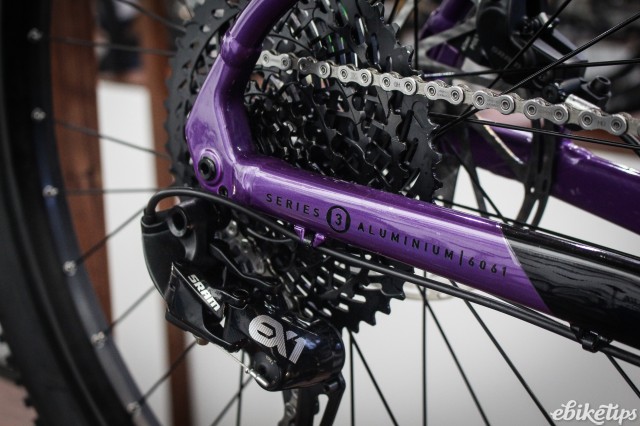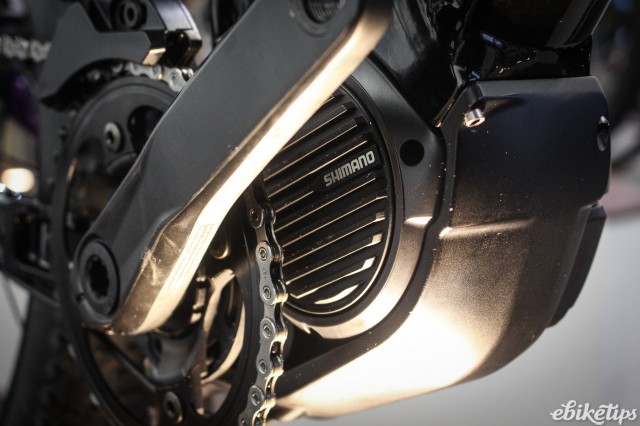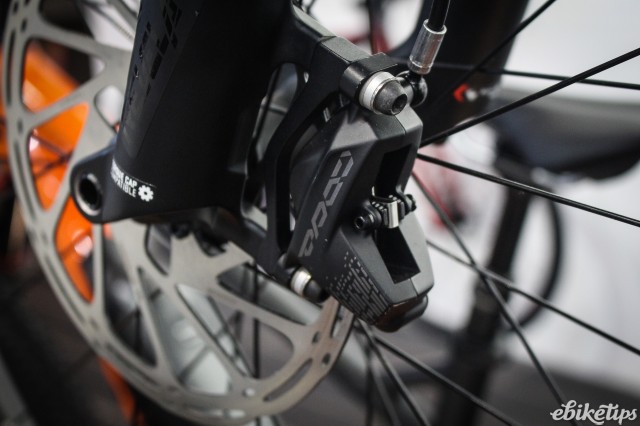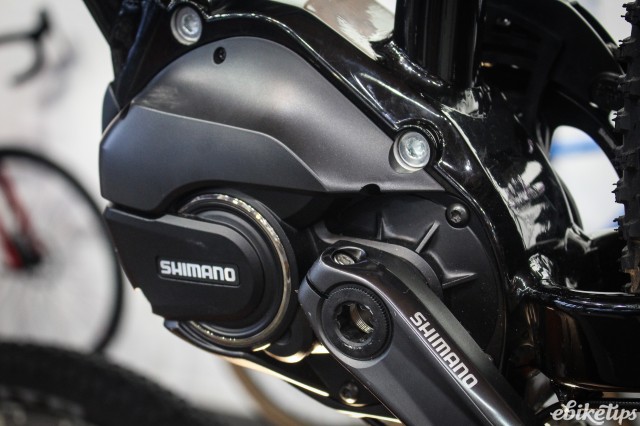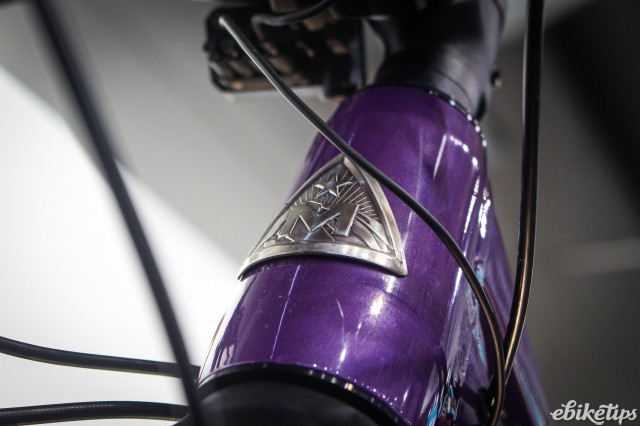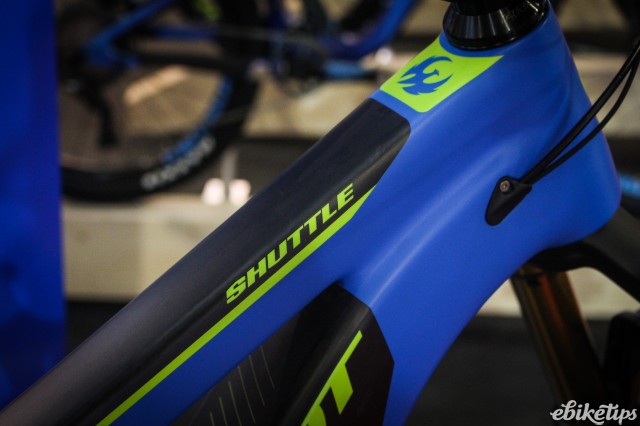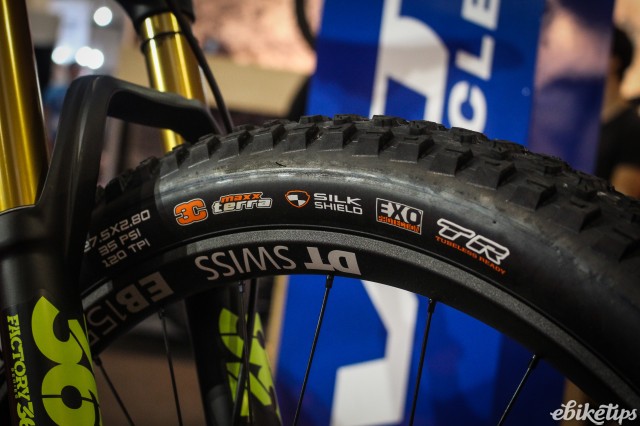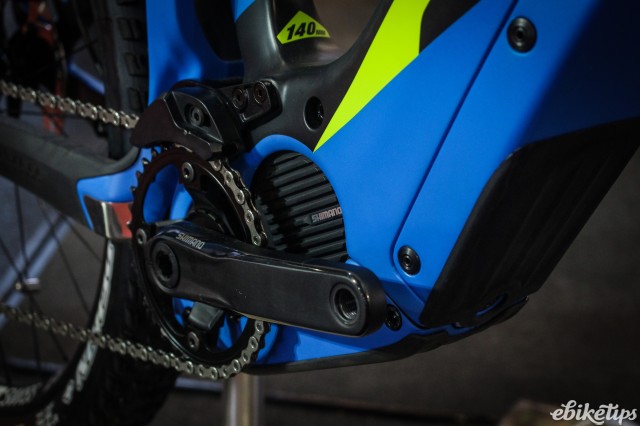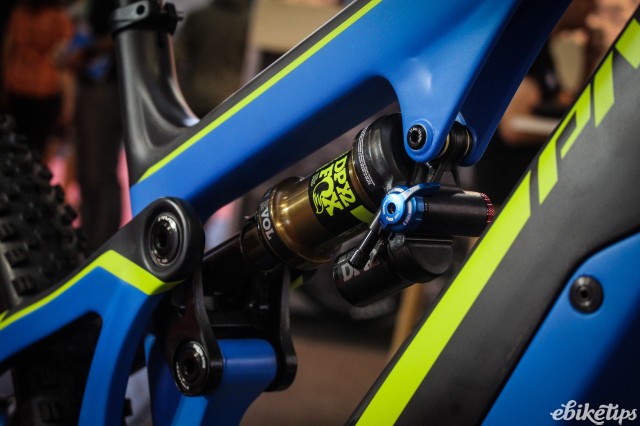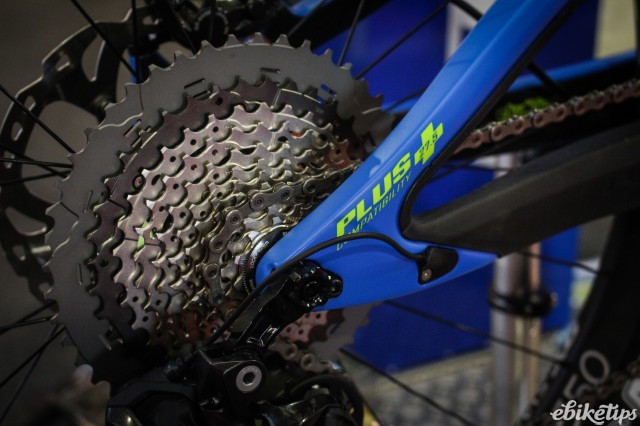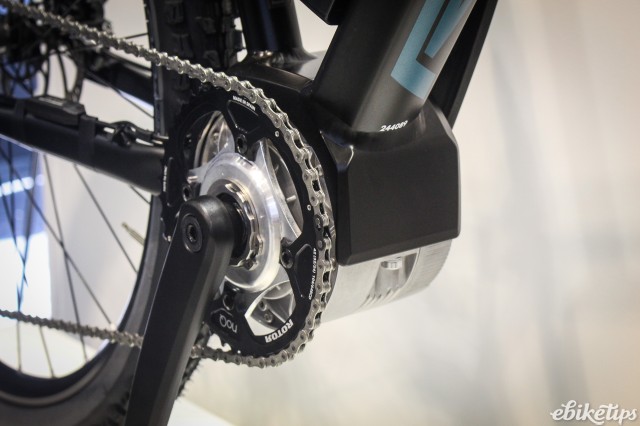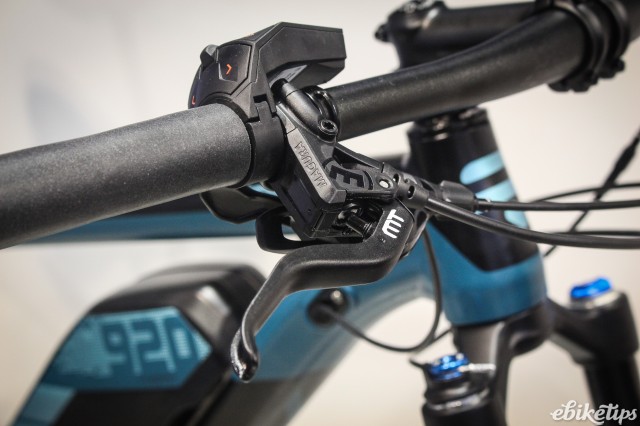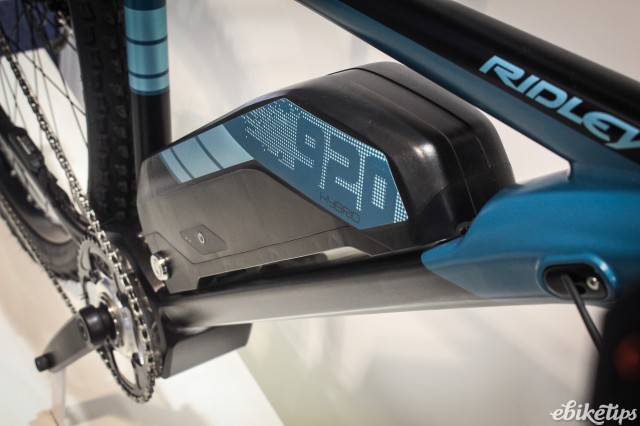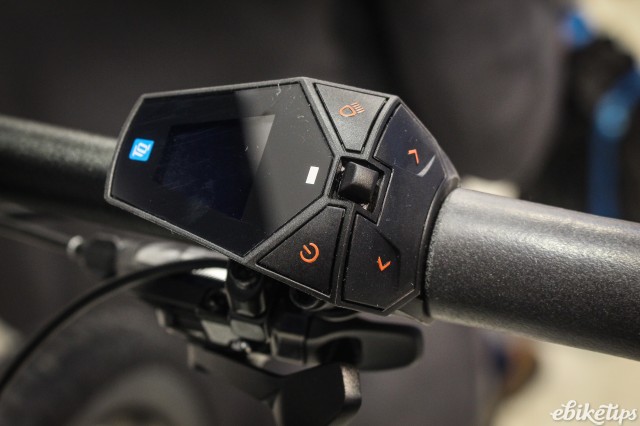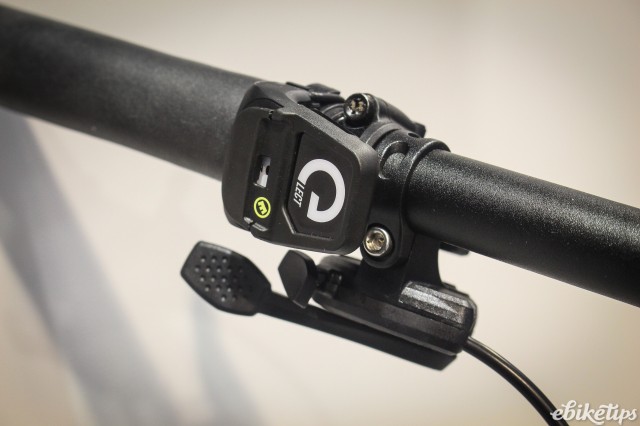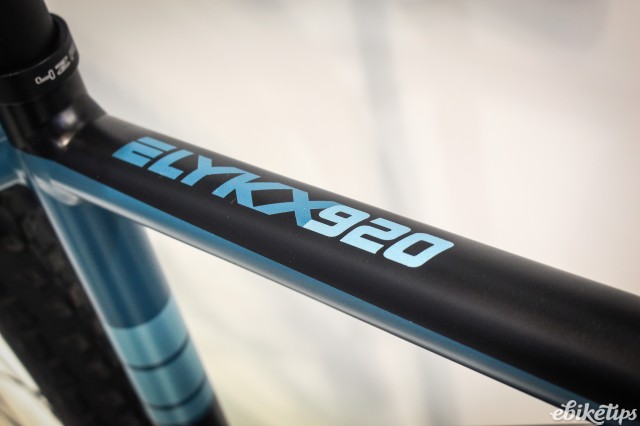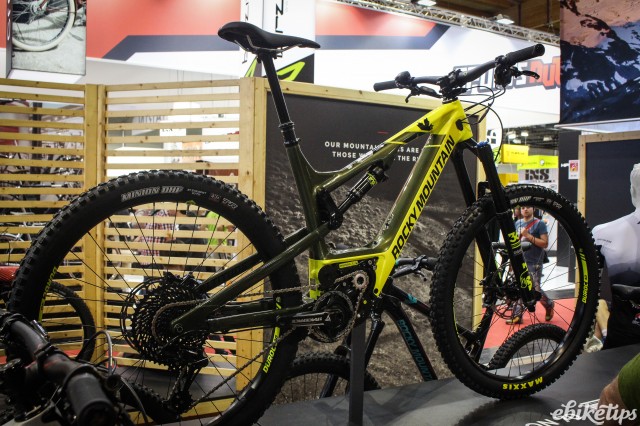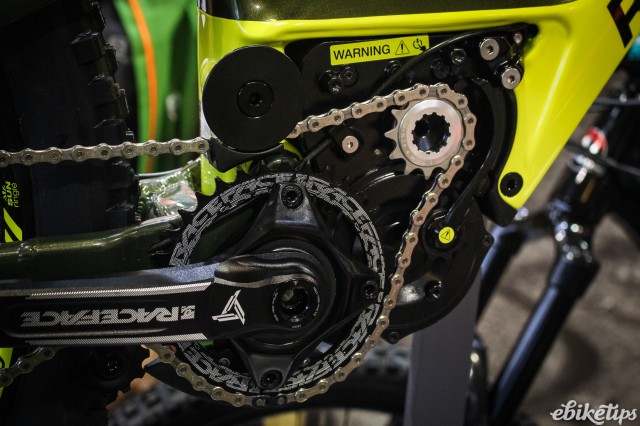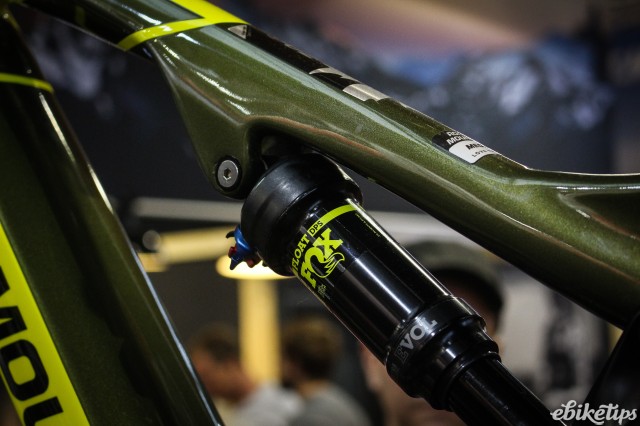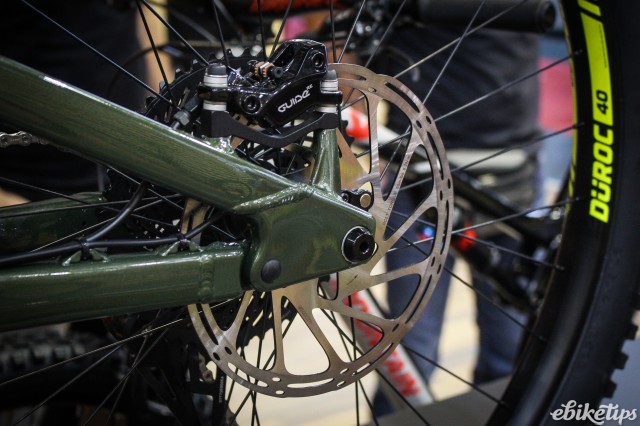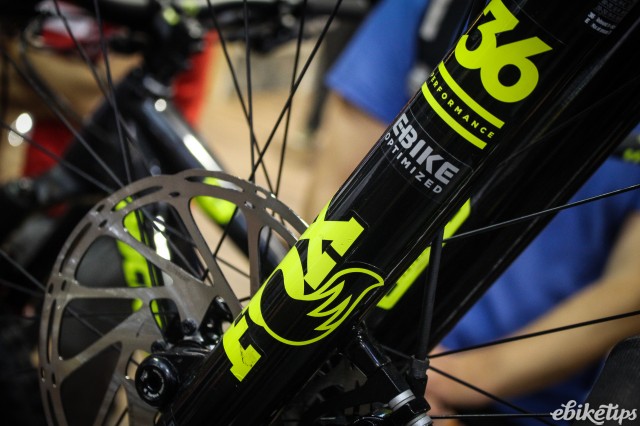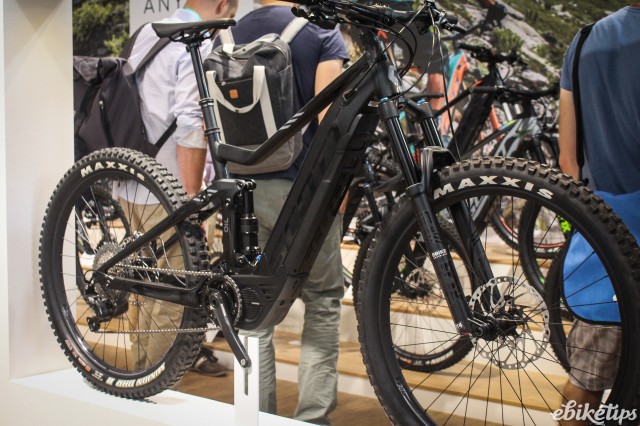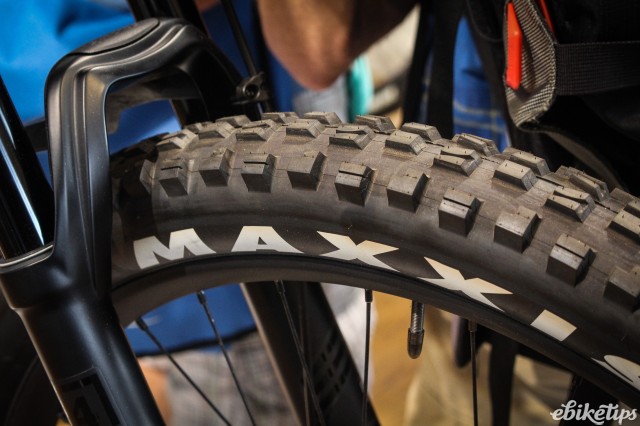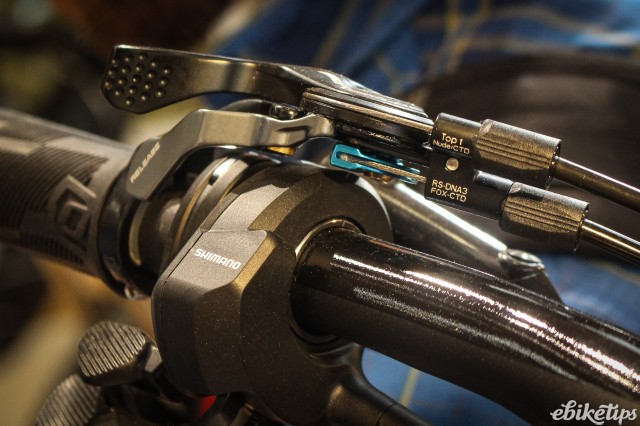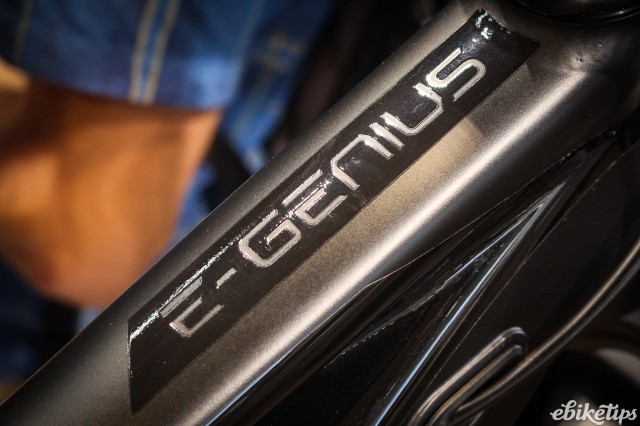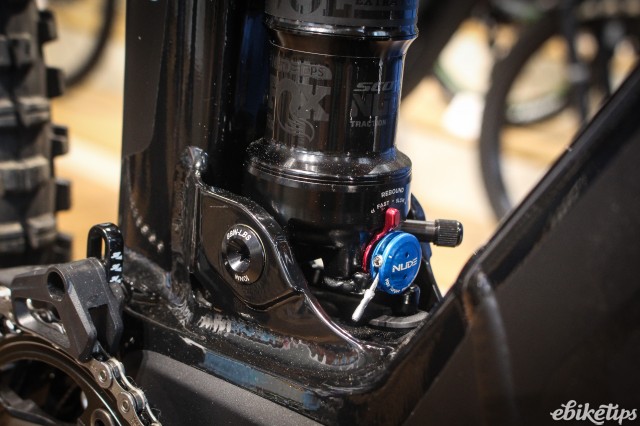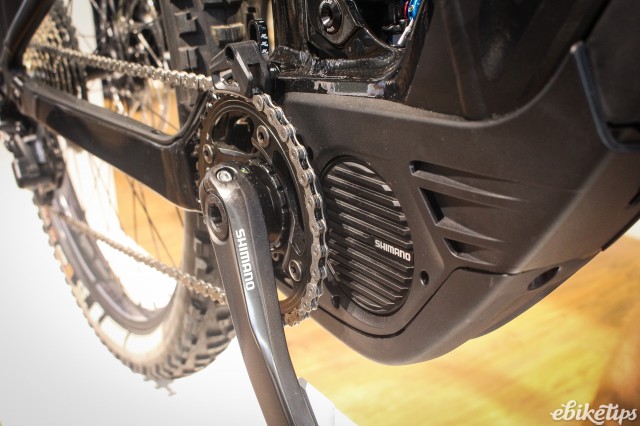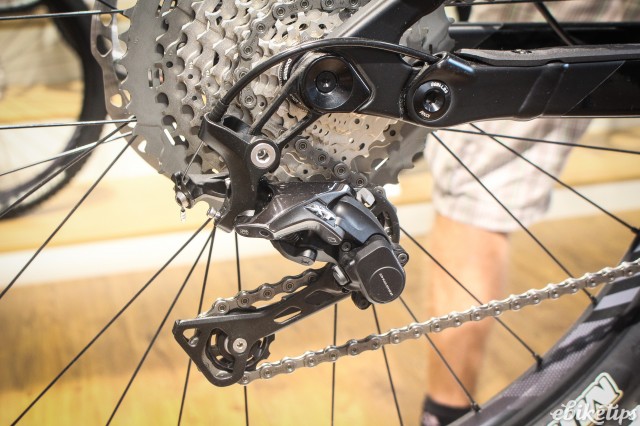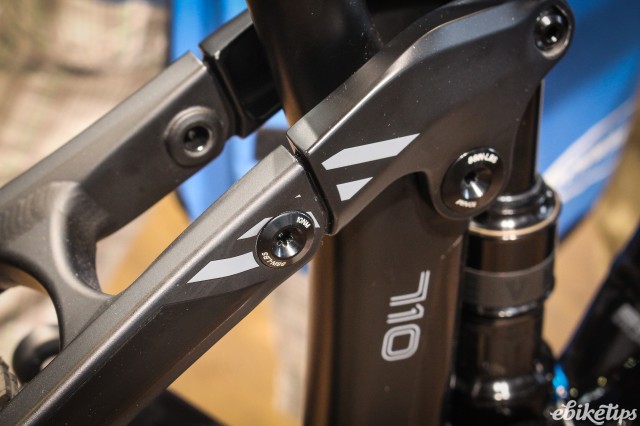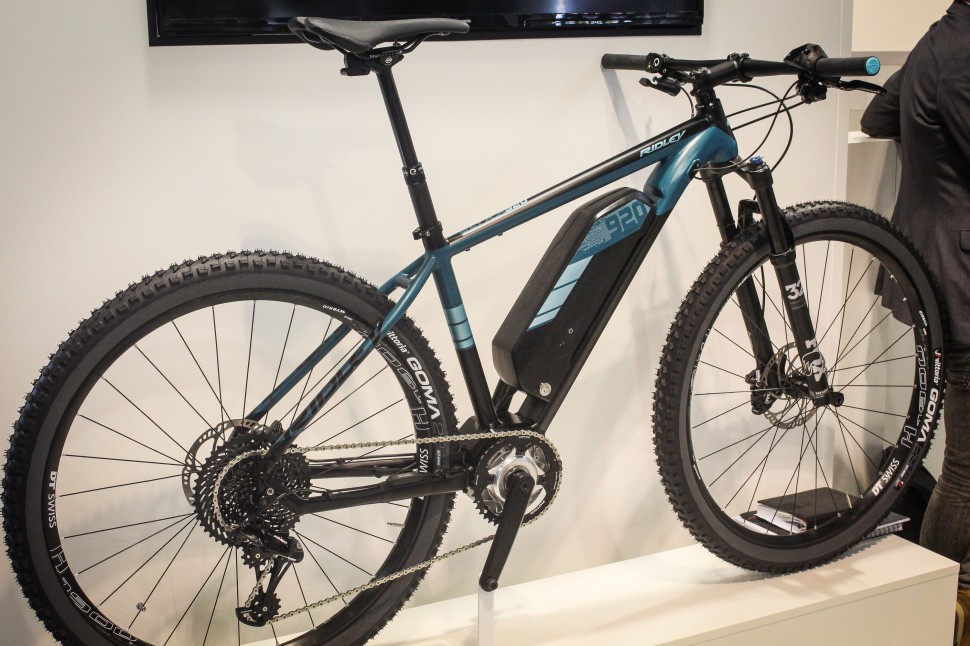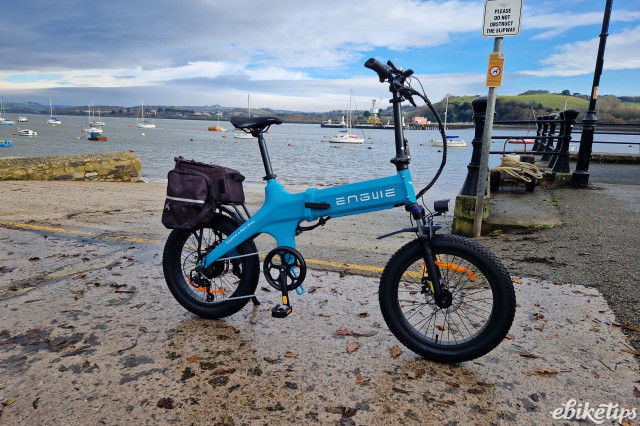Mountain biking has been one of the big growth areas in the last few years. The maturing e-bike technology has meant that manufacturers are building more and more trail-capable e-MTBs, and if you talk to a cross section of builders you’ll soon get the impression that it’s the part of the MTB market that they’re the most interested in at the moment. These are high-value bikes and they’re selling fast: at least three big manufacturers we’ve talked to in the last few months have said that the biggest e-MTB problem they have is making enough of the things to meet the demand. That’s one of those good problems.
Anyway, it’s been an exciting few years in e-MTB and that’s set to continue. Here are six bikes from the Eurobike show that are going to be worth looking at over the next year. There were so many interesting e-MTBs at the show that picking six feels a bit arbitrary, but anyway: here they are!
BH Atom X
BH Bikes launched their new e-MTB, the Atom X (pictured above), at Eurobike, and in terms of innovations per square metre it was one of the more interesting bikes at the show. The Atom X is one of the first bikes to be designed to use the more powerful Brose Drive S unit, which increases assistance in the 60-90rpm cadence range for better power application for technical riding.
The Atom X uses a new battery configuration. The patented system holds the battery in the down tube, but it slides into place through an access port on the top tube. There’s a locking lever on the top of the battery which can be released with a key bracelet, using NFC technology.
The BH is also one of the first e-bikes to switch to the larger, higher-capacity 21700 cells that are being developed by Tesla, among others. The Atom X has a maximum battery capacity of 720Wh (a 500Wh unit is used on the lower spec models) and uses a 4A charger for faster charging.
BH have even developed their own Linux-based head unit, which also incorporates a Bluetooth chipset to connect with a smartphone app. Riders will be able to configure the bike’s assistance modes to their personal preference.
Rocky Mountain Altitude Powerplay
It’s not often that a bike company develops its own mid drive system, rather than using one of the increasingly numerous off-the-shelf solutions, but Rocky Mountain have done exactly that. “We struck out on our own to redefine the category”, says Rocky Mountain's Alex Cogger. “The Powerplay system is the result of designing an electric drive for the suspension and geometry needs of proper mountain bikes; in fact, the geometry and pivot points of the Altitude Powerplay are identical to those of the new Altitude. In our opinion this is the first electric bike that actually rides like a mountain bike should.” Rocky Mountain are of the opinion that the geometry of their bikes is just so, and they wanted the e-bike to match.
There’s a lot going on at the motor end of the drive train. The Altitude Powerplay uses a standard bottom bracket and drive is applied from a separate sprocket. There’s a couple of extra cogs keeping everything tensioned too. All this hides behind a cover on the finished bike, but it’ll be interesting to see how it copes with muddy UK conditions. Having said that, it’s not exactly wall-to-wall sunshine in Vancouver either.
The 48V motor system packs a big 632Wh battery, and the bike itself is a carbon-framed 150mm all-mountain machine using Boost axles and 27.5x2.5” tyres; it's also compatible with 26x3.0” wheels and rubber. The frame comes in four sizes from S-XL and there's three builds available: Altitude Powerplay Carbon 90, 70 and 50. All three use SRAM’s e-MTB-specific EX1 8-speed drivetrain, with different levels of suspension and finishing components.
Pivot Shuttle
Like Rocky Mountain, Pivot are only offering their new Shuttle e-MTB in Europe and the UK. The issue of e-MTBs is a contentious one in the United States, and Pivot aren’t offering this bike over there. That’s the US’s loss: this looks like a great all-mountain e-MTB and at less than 20kg it’s not heavy either, considering what you’re getting.
And what are you getting? A 140mm carbon suspension frame with a 150mm fork, dripping with top quality kit, that’s what. The bike has been designed with Pivot’s long and low trail geometry, and the company have worked the designers hard to get the back end nice and short, with a chainstay length of 436.9mm.
The shuttle uses a four-bar dw-link suspension design tuned specifically for the extra weight of the motor: a Shimano E8000 STEPS unit that seems to be gaining serious ground over Bosch this year. The suspension design allows the rear triangle to be built as one piece for extra stiffness, and Pivot use a 157mm Super Boost hub spacing at the rear for an even stiffer rear end.
The bike is offered in one build, and it’s a high-end one: Fox 36 fork and DPX2 rear shock, e-MTB-specific DT Swiss wheels and Shimano Di2 transmission.
Scott e-Genius 710
This Scott is a bike we’ve reviewed in a previous incarnation and we really liked it then, but it’s been fairly radically redesigned for 2018.
The biggest changes are to the shock position – from under the top tube to down by the bottom bracket – and to the motor system. Scott have switched over to the Shimano STEPS MTB motor for this one, with a 500Wh internal battery that gives the bike a much cleaner look. As does the stealthy paint job.
Scott still have their Twinloc suspension control system on the new bike, and that’s a good thing as we really like the system. It allows you to toggle through three setups: at one end the fork and rear shock are fully open, then the middle setting cuts the rear suspension down, and the third position locks both ends of the bike out. That covers the three most likely setups you’ll want on a ride.
Ridley ELYKX920
This looks like a pretty standard hardtail e-MTB for the most part. Really it’s notable for one thing: Ridley are the first major bike manufacturer to take a punt on the TQ drive mid motor.
The TQ drive is one of the motors we covered in the Eurobike drive system round up and it’s a really interesting bit of tech. It uses something called a pin ring transmission that we don’t really understand, but the upshot is that it puts out masses of power (up to 120Nm of torque) and runs almost as free as a standard bottom bracket when it’s not applying power.
The TQ drive has mostly been used by high-power brands like M1 SportTechnik up until now, in fast bikes for the Swiss and EU S-pedelec markets. But TQ are making an EU-compliant version too: they’re going through the process at the moment, and the ELYKX920 might be the first production bike to run it. It’s the first one we’ve seen, anyway.
Marin Nail Trail E 27.5+
Such is the speed at which the e-MTB market is moving that when we first talked to Marin about this new bike they weren’t sure that it was going to be called the Nail Trail E, nor that it was going to be purple. By the end of the show they’d had enough meetings to confirm that they were going to keep the name and paint job. Which is good news: especially the paint job. We like purple.
Marin have opted for Shimano’s E8000 motor; the design of it allows for a tighter back end which is a good thing for handling, especially on a trail hardtail such as this. The Nail Trail E shares much of its geometry with the non-powered bike: a long top tube with short head tube and slack head angle, coupled with that short back end. They’ve beefed up the fork, though: where the standard bikes get a 120mm Rock Shox Revelation RC fork, the e-MTB version ups that to 140mm, which is sensible considering the extra weight.
The bike at the show was very much a prototype but Marin are committed to bringing it into the range for 2018, so watch out for it.
